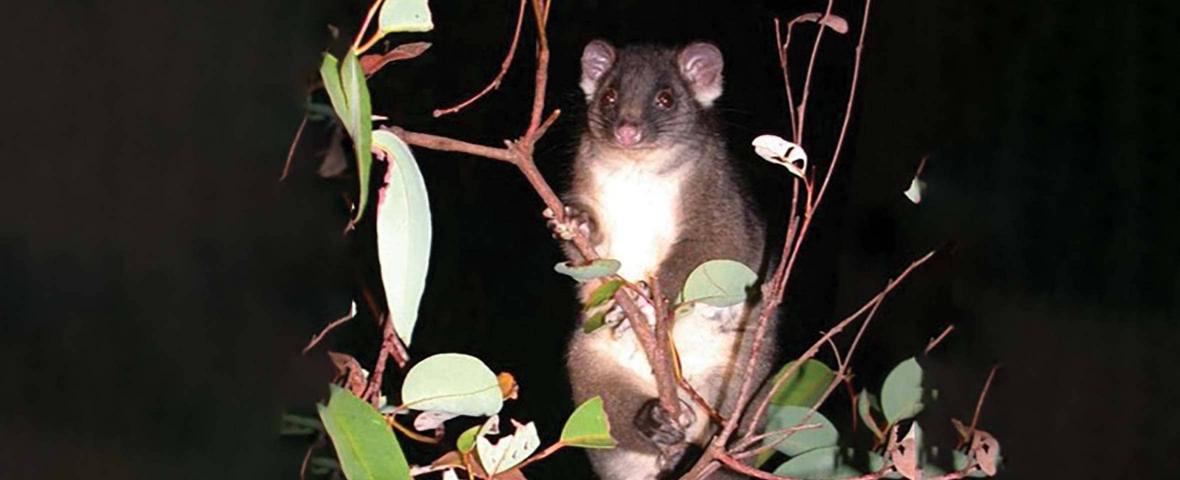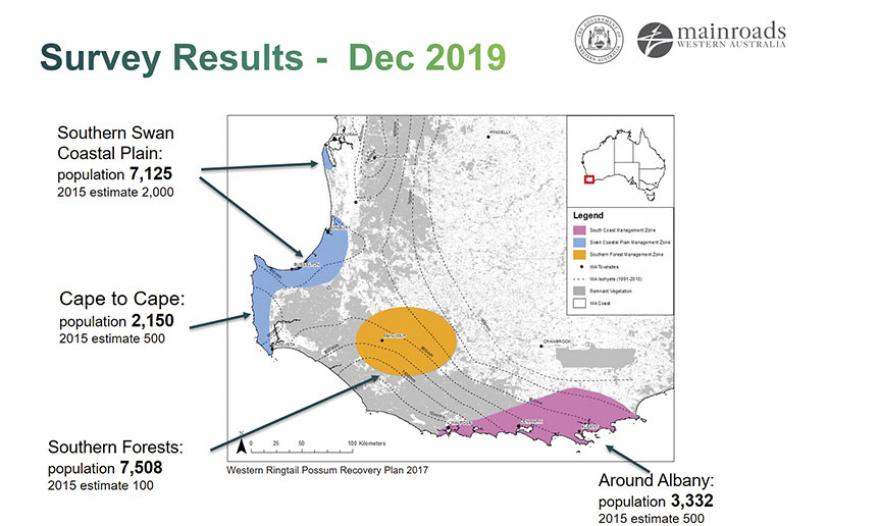Protecting The Iconic Western Ringtail Possum

A key consideration in the planning and development of the $852 million Bunbury Outer Ring Road (BORR) project was to contribute to the protection of one of WA’s most endangered marsupials – the Western Ringtail Possum, also known as Ngwayir by the local Noongar people.
Unique to the south west of Western Australia, the Western Ringtail Possum is classified as critically endangered. Common in the urban areas around Busselton and Dunsborough, the estimated population of the species in 2014 was just 3,400 adults. However, the population estimate was based on very limited information. The species habitat stretches from south of Mandurah, throughout the southern Swan Coastal Plain to Augusta, and through the southern forests to Albany.
We worked closely with the Western Ringtail Possum Recovery Team and the Department of Biodiversity, Conservation and Attractions (DBCA) to design and undertake a survey over the entire area that possums inhabit. This included extending the survey well beyond the BORR project area to cover the entire South West Region from Binningup to the Capes, southern forests, and Albany regions.
Over a twelve-month period, our Environment team and South West Region worked with consultancy Biota Environmental Sciences to walk 1,287 kilometres of transects, over an area of 114,234 hectares, to survey Western Ringtail Possum populations at over 40 sites. Due to access and logistical issues, surveys were not undertaken in urban or agricultural areas or along forest rivers.
Each member of the survey team walked alone to minimise disturbance to the possums and was tracked using GPS to ensure their safety and to accurately record sightings of Western Ringtail Possums.
Data verification occurred each day and, after analysis, we were able to determine highly accurate estimates of population densities in the areas surveyed. This allowed us to determine a new total population estimate for the species. The 2019 population estimate is 20,110, a sixfold increase on the 2014 estimate.
The 2019 population estimate provides a rigorous data set that can be used to determine the potential impact of development projects on local Western Ringtail Possum populations, and will assist in understanding trends in the population and distribution of the species.
The Western Ringtail Possum Regional Surveys Project has provided an invaluable resource for environmental regulators, universities, researchers and environmental groups across Australia and the world by contributing to their work in protecting the future of the possum.
The data has been provided to the Environmental Protection Authority, the Western Ringtail Possum Recovery Team and DBCA and will be published in scientific journals.

